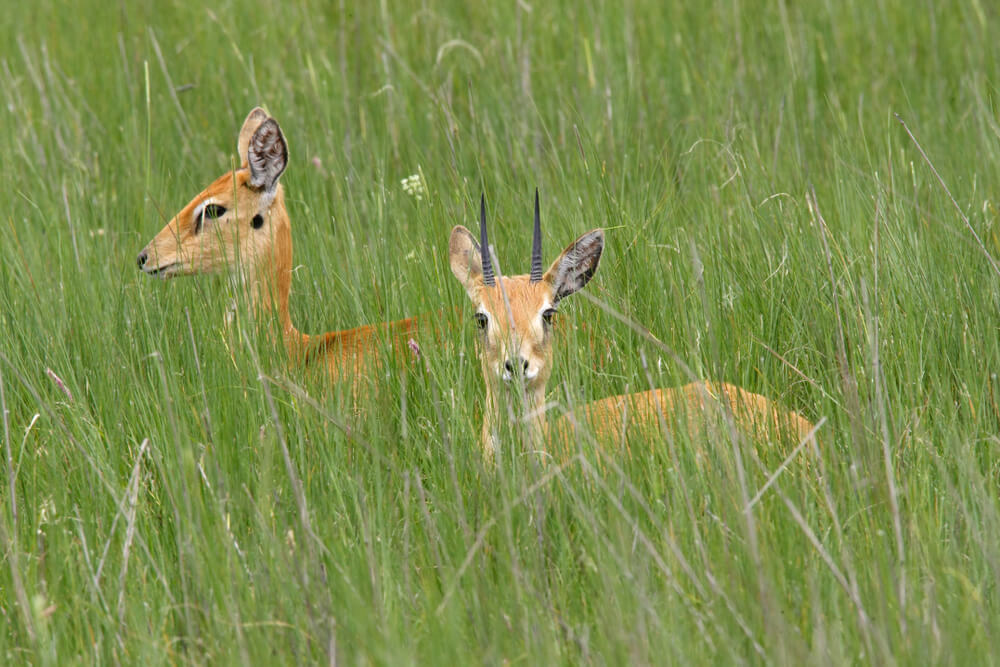

Oribis are pigmy antelope, found in eastern, southern and western Africa. Their range includes Nigeria and Senegal in the west to Ethiopia and Eritrea in the east and southward to Angola and the Eastern Cape region of South Africa. The oribi inhabit floodplains, tropical grasslands, savannah areas, and montane grasslands. The IUCN have classified the oribi as “least concern,” making it a good game hunting adventure for hunters needed a challenge.
They are herbivorous animals and feed on grasses, mushrooms, leaves, flowers, and herbs. These antelopes are also water-independent and gather the liquid they need from the food they consume.
Oribis are seasonal breeders and breeding depends on their location, although there is a peak that usually occurs within the rainy season from August-September, with southern Africa births peaking in November and December. Their gestation is 5-6 months and females give birth to one lamb that is hidden for the first month after birth. Males also play a role in rearing the young lamb by guarding them from other males and possible predators.
Enemies of the oribi include leopards, caracals and pythons. Young oribi also are threatened by jackals, the Libyan wildcat, ratels, baboons, eagles, and monitor lizards.
Name:
Ourebia Ourebi
Weight:
26-49 lb
Shoulder Height:
20-26 in
Horns:
Males Only
Gestation Period:
5-6 months
Life span:
8-12 years
The Oribi Gives a Experienced Game Hunter a New Challenge.
The oribi reaches 20–26 inches at the shoulder and weighs 26–49 pounds. It possesses a slightly raised back, and long neck and limbs. The yellowish to brown coat contrasts with the white chin, throat, underparts, and rump. Only males have thin, straight horns that grow to 3.1–7.1 inches long.
The best time to target oribi on a game hunting safari is in the early mornings or late afternoons, when they are most active. When they sense danger, they will run off, but then stop, look back and even venture closer to see what if the danger has now dissipated. And that is when the hunter will strike.
This antelope is extremely small. Some PHs recommend this game hunting target for experienced hunters, looking for a new challenge. The reward of this hunting adventure is the trophy itself. When successfully targeting the orobi, you are one step closer to ticking the box and completing a Tiny 10 hunting adventure. The other members of the Tiny 10 include, the blue duiker, common duiker, red duiker, Damara dik-dik, steenbok, Cape grysbok, Sharpe’s grysbok, klipspringer, and suni. These small antelopes are a great challenge to hunt and the perfect targets for an exhilarating experience hunting in Africa!
When oribi hunting in Africa , use any of the smaller caliber scoped rifles such as the .22 to .243 will get the job done. Bullet tips should not be more than 45 to 55 grains. Ensure you use a solid or monolithic tip. Do not use any larger caliber as damage to your trophy oribi could be catastrophic.
Available Oribi Hunts
Search from our range of Hunts across various popular destinations in Africa.
Book Your Hunt